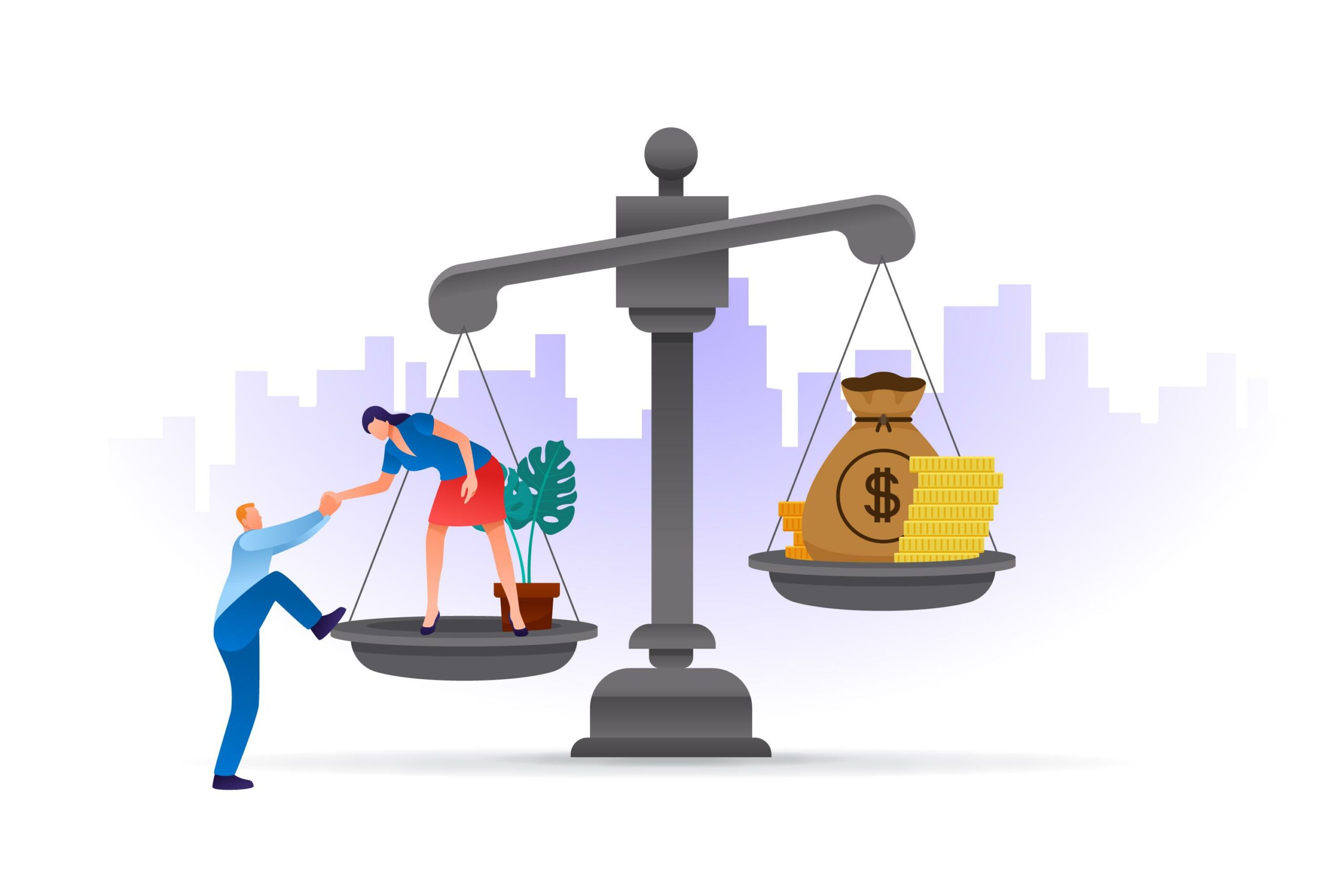The issues of equal pay and the gender pay gap (GPG) continue to dominate workplace conversations. However, there is often confusion surrounding the two terms, with many people mistakenly using them interchangeably.
It is important to understand that while both concepts deal with pay disparity, recognising the difference could help your organisation avoid unlawful practices.
Grasping the concept of equal pay vs. the gender pay gap starts with defining each individually. This blog will also explore the relationship between the two and how to approach any challenges your organisation may face.
Understanding Equal Pay
Equal pay refers to the legal requirement that within an organisation, individuals of different genders who are engaged in like work, work rated as equivalent, or work of equal value must receive equal pay.
The Equality Act 2010 ensures that employees are paid fairly, regardless of their gender. In fact, equal pay legislation has been in place since the early 1970s and is a fundamental right of all workers.
Exploring the Gender Pay Gap
The gender pay gap, on the other hand, is a broader measure of the difference in the average earnings of men and women across an organisation, a business sector, an entire industry, or the economy as a whole.
In the UK, for example, the gender pay gap in April 2022 was 8.3% among full-time employees. This is the same level as in 2017–2018, when employers were first required to publish the statistics.
Reasons for Having a Gender Pay Gap
It is important to remember that having a GPG does not necessarily mean an organisation is paying employees unfairly. There are many reasons it may exist—some of which are difficult to overcome.
Here are a few common reasons:
1. Overrepresentation:
Women may be overrepresented in roles or functions where salaries are typically lower. Also, they are often underrepresented in high-paying sectors such as finance or investment banking.
2. Career Breaks and Part-Time Work:
Women are more likely to take career breaks to look after family and return to work on part-time wages. This can impact their career progression and earning potential.
3. Confidence Gap:
Studies have shown that women tend to apply for promotions only when they meet all the required criteria, while men are more likely to apply when they meet only a portion of the necessary qualifications.
4. Limited Reward Framework:
This can lead to a lack of structure and consistency when making pay decisions throughout the organisation. As a result, base salaries can differ greatly. This is also a factor that can lead to equal pay concerns.
The Relationship Between Equal Pay and the Gender Pay Gap
An organisation can be compliant with equal pay regulations at every level but still have a considerable pay gap if its senior management and leadership teams are predominantly male, while junior positions are held by a majority of females.
This imbalance in representation can contribute to a significant disparity in average earnings between genders.

It is worth noting that organisations committed to gender diversity may inadvertently increase their gender pay gap by recruiting more females at the entry level while maintaining a male-dominated leadership team.
Therefore, addressing the gender pay gap requires a comprehensive approach that includes initiatives to promote gender diversity at all levels, as well as offering progression opportunities for all employees.
Business Benefits of Equal Pay
Creating a transparent pay structure that provides equal pay and benefits to all employees offers many benefits for both your organisation and employees. Some of these include:
1. Legal Compliance:
Ensuring equal pay compliance reduces the risk of costly legal action and potential damage to your organisation’s reputation. If you lose a claim from an employee, the employment tribunal could force you to carry out an equal pay audit and publish the result.
2. Employee Engagement and Trust:
When employees feel valued and can see your commitment to fair and equal pay, they are more likely to trust the organisation and be more engaged with their work. This fosters a positive workplace culture and improves overall employee satisfaction.
3. Retention and Attraction of Talent:
Organisations that prioritise equal pay are more likely to attract and retain top talent. Research has shown that diverse companies have higher employee engagement, retention, productivity, and profitability rates.
4. Enhanced Reputation:
Taking proactive steps to address the gender pay gap demonstrates a commitment to fairness, equality, and social responsibility. This can positively impact your company’s relationships with customers, partners, and stakeholders.
Addressing Equal Pay vs. the Gender Pay Gap
There are a few ways to promote equal pay and reduce the gender pay gap. These include:
Equal Pay Audits:
Conducting regular equal pay audits helps identify any disparities and ensures that employees are being paid fairly. This practice reduces the risk of pay discrimination and legal action.
Inclusive Language:
Eliminating gender-specific vocabulary in job descriptions and employee communications can help to attract a more diverse pool of applicants.
Learning and Development:
Investing in quality training programs and targeting the skills required for development can increase the chances of promotion and pay progression for those typically in lower-paid roles.
Support for Returning Mothers:
Implementing programs that support women returning from maternity leave and career breaks can help bridge the gap in career progression and ensure equal opportunities for advancement.
Conclusion
Understanding the difference between equal pay vs. the gender pay gap can help build trust with employees and keep your organisation out of legal trouble.
While we don’t necessarily need to aim for a zero gender pay gap as there is an element of personal choice involved, taking proactive steps to bridge the gap where possible will enable you to create a more equitable and inclusive workplace.
Equal pay, on the other hand, is a legal obligation and so needs to be considered at all levels. A structured framework and comprehensive job evaluation process will help ensure you comply. However, if you’re still unsure of how to approach any equal pay challenges, get in touch with our team today to talk about it.

